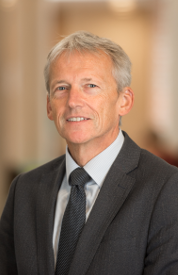About the exhibition
Wonnacott and Lessore were at the heart of the critical debate around the centrality of drawing from life in the teaching of art which preoccupied British artists and art schools in the latter half of the 20th Century and which is still relevant today.John Wonnacott and John Lessore: About Life brings the acclaimed artists and former tutors back to Norwich University of the Arts in an exhibition of paintings and drawings from life – and marks the beginning of a year of exhibitions and events to celebrate our 170th anniversary.
Whilst a concurrent exhibition at Norwich Castle Museum and Art Gallery reunites many distinguished works made by the artists during their time at Norwich which were bought by Tate, the Arts Council Collection, Norwich Castle Museum and Art Gallery and private collectors, the work on display at NUA explores the practice of these two important artists more fully, including drawings and paintings from the life model which span their careers. Wonnacott and Lessore were responsible for the development of the Life Room from 1978 to 1985 to re-establish Norwich’s reputation for producing graduates skilled in the practice of drawing and painting from life. It was Edward Middleditch (RA), then Head of Fine Art, who recruited Wonnacott and Lessore for Norwich. Their development of the Life Room was in response to the debate launched by R B Kitaj and David Hockney around The Human Clayexhibition at the Hayward Gallery in 1976. Middleditch was countering what he perceived as a de-skilling in art education in the 1960s that resulted from the enthusiasm for Abstract Art. He felt there was a decline in the teaching of drawing from life, which he believed was the basis of all art. Wonnacott and Lessore created two Life Rooms in the riverside studios of the late 19th century Art School buildings where all students were trained in basic drawing from observation.
Thanks to the trio of Middleditch, Wonnacott and Lessore (who worked closely with Lynda Morris, curator of these exhibitions) Norwich became an influential contributor to the development of the practice of drawing and painting in a dedicated life room in the early 1980s. They built on a long tradition of figurative painting in Norwich linked to the Dutch influence on Cotman and Crome and their use of the Graphic Telescope, through to Michael Andrews, Jeffrey Camp and Colin Self.
From lectures and demonstrations in anatomy at the Norfolk and Norwich Hospital to specialist lectures on perspective and the mathematical division of a rectangle (for composition), alongside art history lessons taught in front of paintings in museums in order to examine the application of paint, Wonnacott and Lessore with Lynda Morris organised a whole programme which focused students on the principles of Life Room teaching. This was also reflected in Lynda’s exhibitions at the Norwich Gallery which included shows on Sickert, Tonks, Peter Greenham and Norman Blamey as well as Peter Fuller’s Rocks and Flesh.
These exhibitions explore not only the work of these two artists and their contribution to art school practice at this crucial point in its pedagogic history but also examine their position in twentieth century art and the critical reception of figurative painting at the time. It is now widely agreed that artists such as Bacon, Freud, Hockney and Andrews account for much of the esteem in which British painting is held internationally. The role of The New Spirit in Paintingexhibition at the RA in 1990 and the polemics of the artistic landscape of the 1970s and 80s are also further explored.The Life Room and the City and About Life are two beautiful exhibitions which bring together work by two different and distinct British artists, connected by a common goal.
Copies of the exhibition catalogue are also available at both venues and online.
Contact Louise Milsome, Marketing, Events and Gallery Officer at the NUA Gallery for further information.
@NUAgallery


Recent Comments